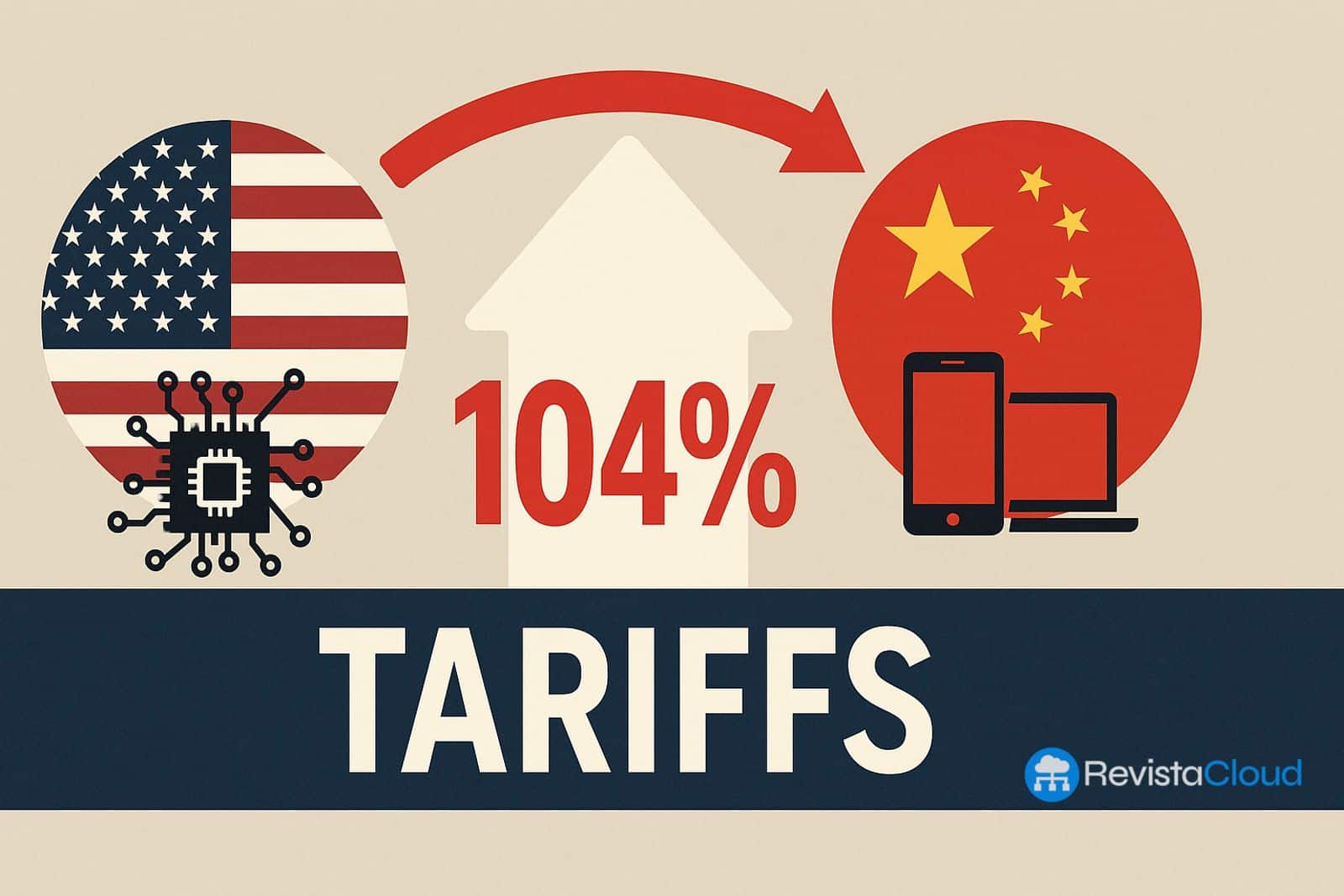Sure! Here’s the translation:
A report details how the end of moratoriums and the tightening of customs tariffs could drive up prices of key products like mobile phones, laptops, and consoles.
As the global tech market continues to face logistical and supply chain tensions stemming from tumultuous years, a new report from the Consumer Technology Association (CTA), prepared by the consulting firm Trade Partnership Worldwide LLC (TPW), warns of a new threat: a tariff escalation that could result in price increases of up to 69.4% on essential electronics. This warning is not hypothetical: some of these measures are already in place, while others are set to be implemented imminently.
The Origin of the Problem: A Cascade of Protectionist Measures
The study models a realistic impact scenario stemming from current U.S. trade policy, which includes:
- The end of reciprocal tariff suspensions between the U.S. and various trading partners.
- New 25% tariffs on key products as a result of Section 232 of the Trade Expansion Act.
- An already approved increase from 7.5% to 25% on lithium batteries by 2026.
- The continuation of a 20% tariff under the IEEPA (International Emergency Economic Powers Act) on imports from China.
- The non-renewal of certain customs exemptions applied during the previous administration.
The outcome is a domino effect that will impact not only the U.S. but all economies linked to the global tech supply chain.
Direct Consumer Impact: Over $123 Billion
According to TPW’s calculations, U.S. consumers would lose over $123 billion in purchasing power due to the effects of the tariffs. However, the impact does not stop at the U.S.: any country without bilateral trade agreements would also be equally exposed to increased costs.
The table below summarizes the expected impact:
| Product | Average Consumer Price Increase | Estimated Loss in Consumption (U.S.) | Average Increase per Unit |
|---|---|---|---|
| Video games (consoles) | ↑ 69.4% | $12 billion | +$428 |
| Laptops and tablets | ↑ 34.0% | $23.8 billion | +$269 (laptop), +$152 (tablet) |
| Smartphones | ↑ 30.8% | $31.2 billion | +$255 |
| Desktop computers | ↑ 24.0% | $13 billion | +$287 |
| Monitors | ↑ 31.8% | $5.1 billion | +$111 |
| Accessories and peripherals | ↑ 24.8% | $13.1 billion | +$58 (printers, for example) |
| Connected devices | ↑ 22.4% | $18.3 billion | +$10 to +$81 depending on category |
| Lithium batteries | ↑ 17.9% | $2.4 billion | Up to +$16 |
| Televisions | ↑ 10.7% | $1.9 billion | +$57 |
| Speakers and headphones | ↑ 22.3% | $2.5 billion | +$60 (speakers), +$5 (headphones) |
Everyday Technology, Extraordinary Impact
Unlike other more technical or industrial sectors, the report focuses on products that are integral to daily life: smartphones, personal computers, tablets, gaming consoles, smart speakers, and televisions. The increase will therefore affect both individual consumers and businesses that rely on technology for operations or infrastructure upgrades.
The situation will be especially critical in countries with lower purchasing power, where a €100 increase in the price of a laptop could make the difference between accessing educational or work-related technology.
Industry, Trade, and Logistics: All Exposed
The implications extend beyond consumers:
- Manufacturers: Many rely on parts assembled or made in third countries. Cost pressures may force relocations or margin reductions.
- Distributors and retailers: They will be compelled to pass on new prices or absorb losses in a market already hit by inflation.
- Entrepreneurs and startups: Key tools like laptops or workstations will see their affordability compromised.
A Geostrategic Issue
This scenario is closely linked to the trade rivalry between the U.S. and China, as well as the reindustrialization process pushed by Washington. However, the consequences of these strategies will, at least in the short term, fall on the wallets of millions.
Europe and Latin America, which import a significant portion of their technology from Asia, will also see their supply chains, logistics costs, and purchasing power affected.
Conclusion: A Digital Regression?
If tariffs are solidified and no bilateral agreements are reached, the result will be a tangible regression in the democratization of technology. The promise of universal access to digital tools could be hindered by policies that, without nuance, penalize the average consumer.
With prices already nearing historical highs in many sectors, the impact of this new wave of tariffs could stifle technological renewal, hinder digital education, slow down IT infrastructure deployment, and further strain household economies.
The key question: Is the political price worth the economic and social cost?
Reference: Financial News

